“Global Route Optimization Software Market to reach a market value of USD 22.23 Billion by 2031 growing at a CAGR of 13.9%”
The Global Route Optimization Software Market size is expected to reach $22.23 billion by 2031, rising at a market growth of 13.9% CAGR during the forecast period.
The North America region witnessed 35% revenue share in the market in 2023. This is primarily due to the advanced technological infrastructure and the widespread adoption of route optimization solutions across various industries, including logistics, retail, and on-demand delivery services. North America, particularly the United States, has a highly developed transportation network, which makes it an ideal market for route optimization software.
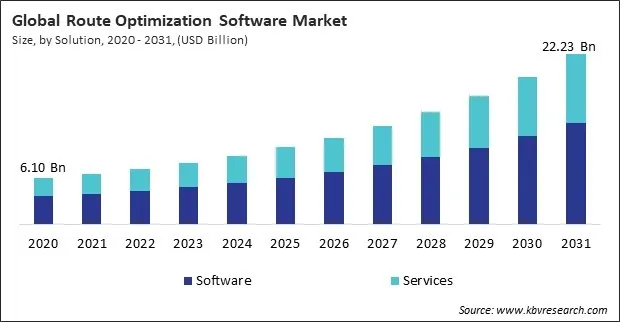
Mobile devices and IoT technologies have revolutionized fleet management by providing a wealth of data in real time. With GPS tracking, sensors, and onboard diagnostics, fleet managers can monitor vehicle performance, fuel usage, traffic conditions, and driver behavior. The continuous flow of data enhances decision-making capabilities, allowing for more accurate and dynamic route optimization. IoT-connected vehicles provide real-time information on delivery status, enabling businesses to make necessary route adjustments quickly, improving efficiency, and reducing operational delays. Hence, the increasing penetration of mobile and IoT technologies in fleet management propels the market's growth.
Additionally, As global competition intensifies, businesses are constantly pressured to streamline their supply chains and reduce costs. Logistics is one of the largest operational expenses for many organizations, and route optimization software provides a proven solution to help reduce these costs. By optimizing routes for fleet vehicles, businesses can lower fuel consumption, minimize idling, and reduce the number of vehicles needed to fulfill orders. These cost savings are particularly crucial for companies operating on thin margins, where every dollar saved can make a significant impact. In conclusion, rising demand for cost-effective logistics and supply chain optimization drives the market's growth.
However, One of the main barriers to adopting route optimization software, particularly among smaller businesses, is the high initial investment required for implementation. These systems often require substantial upfront costs, including software licensing, hardware investments, and integration with existing fleet management systems. This can be a significant financial burden for small and medium-sized enterprises (SMEs) that may not have the resources to invest in expensive solutions. In conclusion, high initial investment and implementation costs hamper the market's growth.
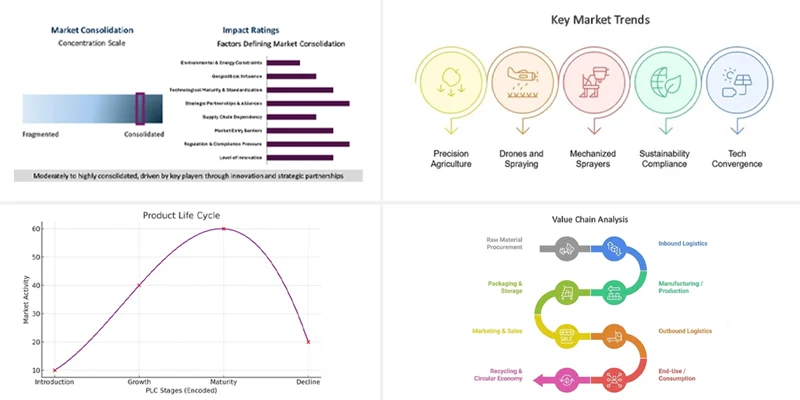
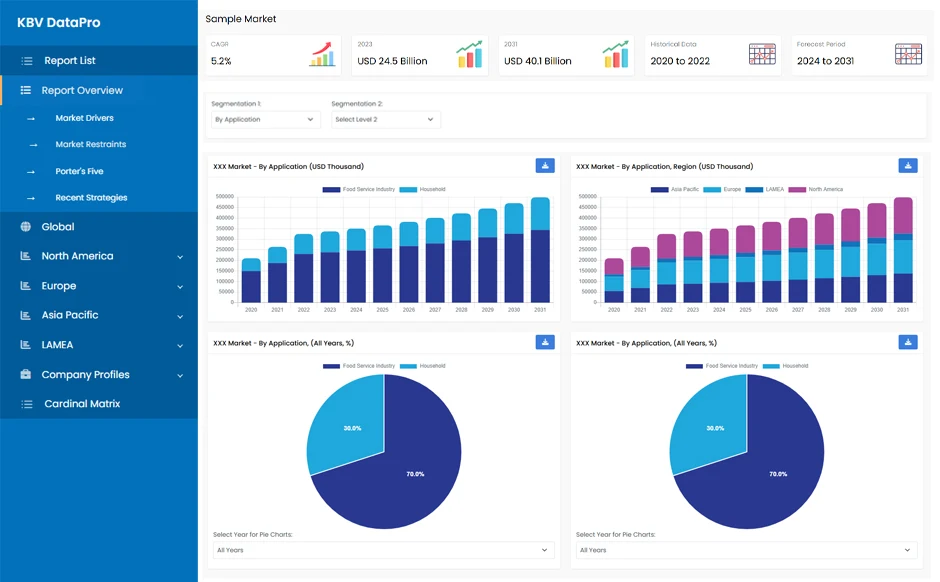
Based on the solution, the market is divided into software and services. In 2023, the services segment attained 39% revenue share in the market. The services segment includes consulting, training, and support services, which are crucial for the effective deployment and maintenance of route optimization software. As businesses seek to implement customized solutions tailored to their needs, the demand for expert consulting and training services has surged.
Based on enterprise size, the market is categorized into large enterprises and small & medium enterprises. The small & medium enterprises segment witnessed 37% revenue share in the market in 2023. SMEs increasingly adopt route optimization solutions to enhance their logistics capabilities and compete more effectively with larger players. Cloud-based and subscription-based models, in particular, offer cost-effective alternatives, allowing SMEs to access advanced route planning tools without needing heavy upfront investments.
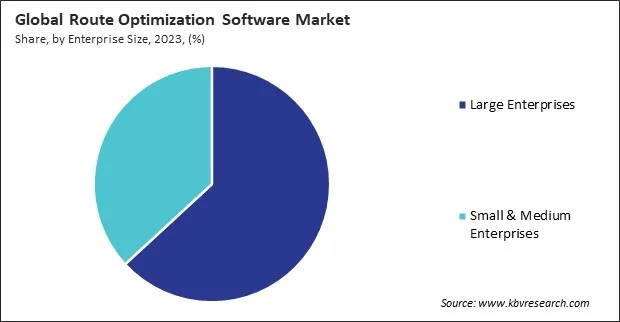
Based on functionality, the market is divided into out and in bound. In 2023, the in bound segment procured 33% revenue share in the market. Inbound logistics, which deals with transporting raw materials or goods to manufacturing plants or warehouses, is also a vital area for optimization. Companies increasingly focus on optimizing inbound routes to reduce costs, improve supply chain efficiency, and minimize delays. By streamlining these operations, businesses can achieve better control over their supply chains, ensuring that materials are delivered promptly and cost-effectively.
On the basis of deployment, the market is segmented into on-premise and cloud. In 2023, the cloud segment attained 26% revenue share in the market. The benefits of scalability, cost-effectiveness, and remote accessibility drive the increasing shift toward cloud-based solutions. Cloud-based route optimization software allows businesses to quickly scale their operations without requiring extensive hardware investments.
By industry Vertical, the market is divided into retail & FMCG, on-demand food & grocery delivery, ride-hailing & taxi services, homecare & field services, logistics & transportation, and others. In 2023, the retail & FMCG segment held 19% revenue share in the market. Retailers and FMCG companies increasingly use route optimization solutions to streamline their delivery operations, particularly for last-mile delivery. With the rise in e-commerce and consumer expectations for faster delivery times, route optimization software helps these companies ensure timely deliveries, reduce operational costs and improve customer satisfaction.
Free Valuable Insights: Global Route Optimization Software Market size to reach USD 22.23 Billion by 2031
Region-wise, the market is analyzed across North America, Europe, Asia Pacific, and LAMEA. The Asia Pacific region generated 28% revenue share in the market in 2023. The rapid growth of e-commerce, logistics, and transportation sectors in countries like China, India, and Japan has played a crucial role in this expansion. The rising demand for fast, cost-effective delivery solutions, particularly in densely populated urban areas, has made route optimization software essential.
| Report Attribute | Details |
|---|---|
| Market size value in 2023 | USD 8.01 Billion |
| Market size forecast in 2031 | USD 22.23 Billion |
| Base Year | 2023 |
| Historical Period | 2020 to 2022 |
| Forecast Period | 2024 to 2031 |
| Revenue Growth Rate | CAGR of 13.9% from 2024 to 2031 |
| Number of Pages | 334 |
| Number of Tables | 610 |
| Report coverage | Market Trends, Revenue Estimation and Forecast, Segmentation Analysis, Regional and Country Breakdown, Porter’s 5 Forces Analysis, Company Profiling, Companies Strategic Developments, SWOT Analysis, Winning Imperatives |
| Segments covered | Solution, Enterprise Size, Functionality, Deployment, Industry Vertical, Region |
| Country scope |
|
| Companies Included | Verizon Communications, Inc., Ortec B.V., Trimble, Inc., FLS – Fast Lean Smart (Solvares Group), Nomadia Group, OptimoRoute Inc., Prism Visual Software, Inc., Route4Me, Inc., Routific Solutions Inc., and Samsara Inc. |
By Solution
By Enterprise Size
By Functionality
By Deployment
By Industry Vertical
By Geography
This Market size is expected to reach $22.23 billion by 2031.
Increasing Penetration Of Mobile And Iot Technologies In Fleet Management are driving the Market in coming years, however, High Initial Investment And Implementation Costs restraints the growth of the Market.
Verizon Communications, Inc., Ortec B.V., Trimble, Inc., FLS – Fast Lean Smart (Solvares Group), Nomadia Group, OptimoRoute Inc., Prism Visual Software, Inc., Route4Me, Inc., Routific Solutions Inc., and Samsara Inc.
The expected CAGR of this Market is 13.9% from 2023 to 2031.
The On-premise segment led the maximum revenue in the Market by Deployment in 2023, thereby, achieving a market value of $16.1 billion by 2031.
The North America region dominated the Market by Region in 2023, and would continue to be a dominant market till 2031; thereby, achieving a market value of $7.4 billion by 2031.
Our team of dedicated experts can provide you with attractive expansion opportunities for your business.
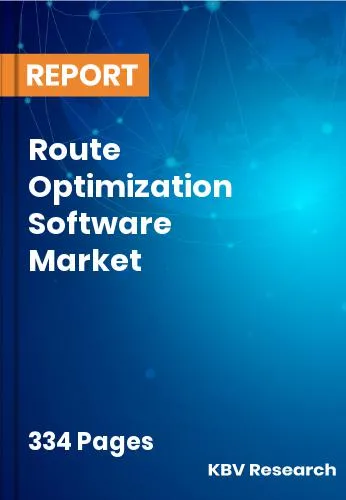
 Drivers
Drivers
 Restraints
Restraints
 Opportunities
Opportunities
 Challenges
Challenges
